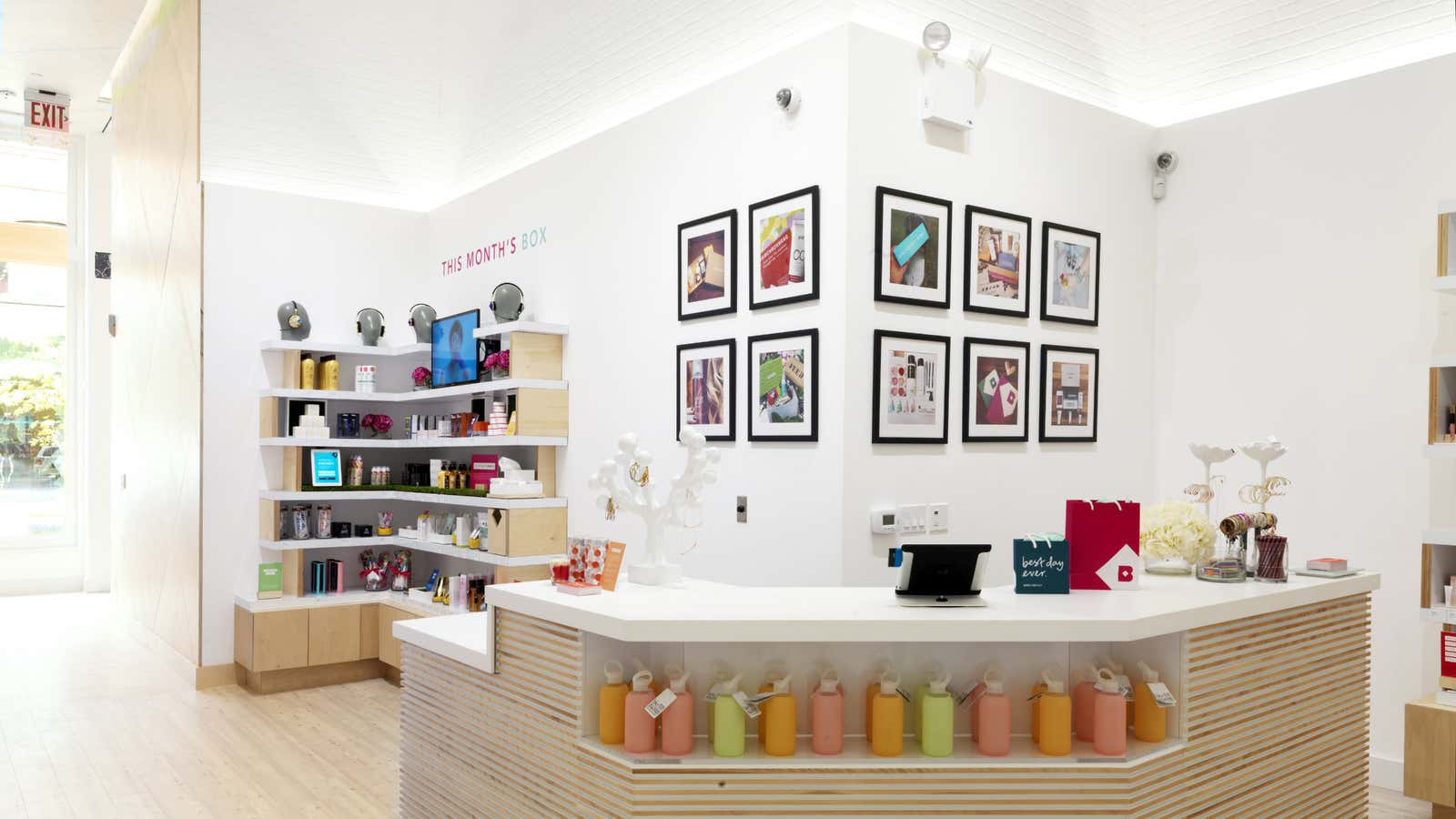This item has been corrected.
Birchbox recently opened up its first retail store in New York City.
The beauty ecommerce startup is known for its subscription service, where customers pay $10 per month to receive a box of product samples. The company has attracted more than 800,000 users since launching in 2010, but only around 30% of its revenue comes from full-product online sales from Birchbox.com. Its new store is an attempt to figure out why that percentage isn’t higher.
Birchbox co-founder Katia Beauchamp describes the Soho store as a “laboratory.” It’s designed to reflect its online presence with iPads that showcase product reviews and a beauty bar where customers can test out different looks similar to the makeup and hairstyling tutorials on their website.
“One thing that’s made the company successful is its content arm,” Daniella Yacobovsky, co-founder of online jewelry retailer BaubleBar told Quartz. “With the physical store, they’ve maximized that element in real life.”
Birchbox is using cameras and heat sensors to track customers as they make their way around the store, seeing which products they’re attracted to and how they use the iPads. Beauchamp told Quartz that they’re looking into adding WiFi analytics and want to make the Birchbox app “a companion to the store.” When connected to WiFi, the app would be enabled to send push advertisements and collect customer data, like how many times the user has visited Birchbox and what products she’s purchased.
Several brands, such as Bloomingdales, Brookstone, and Warby Parker, are experimenting with similar in-store analytics. “Traditionally when customers walk into a retail store, they’re anonymous,” Dave Gilboa, co-founder of Warby Parker told Quartz. “The store clerks don’t know who that person is, and whether they’ve shopped 100 times in another store.”
For Birchbox—a series B round of funding in April put the company’s pre-money valuation at $485 million—the move into retail is less about having a stronger offline presence than figuring out how to increase online sales.
And while a single retail store in Manhattan is good for branding, it has its limitations when it comes to analytics. “You can’t have a sample store that’s a few hundred feet and gain volumes of insights,” says Sucharita Mulpuru, a retail analyst with Forrester Research. “There’s a scarcity of data. All you need to do is observe the store on a busy Saturday.”
Correction: A previous version of this item said that only 30% of subscriptions converted into sales.
